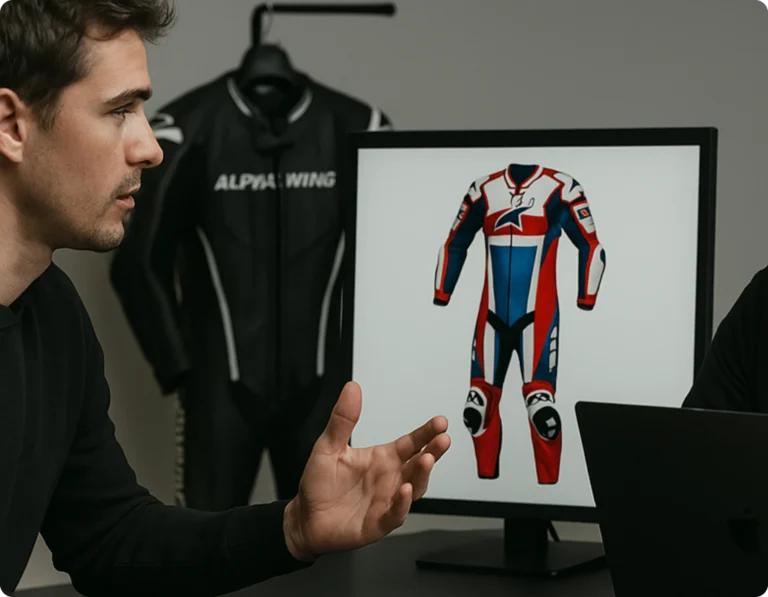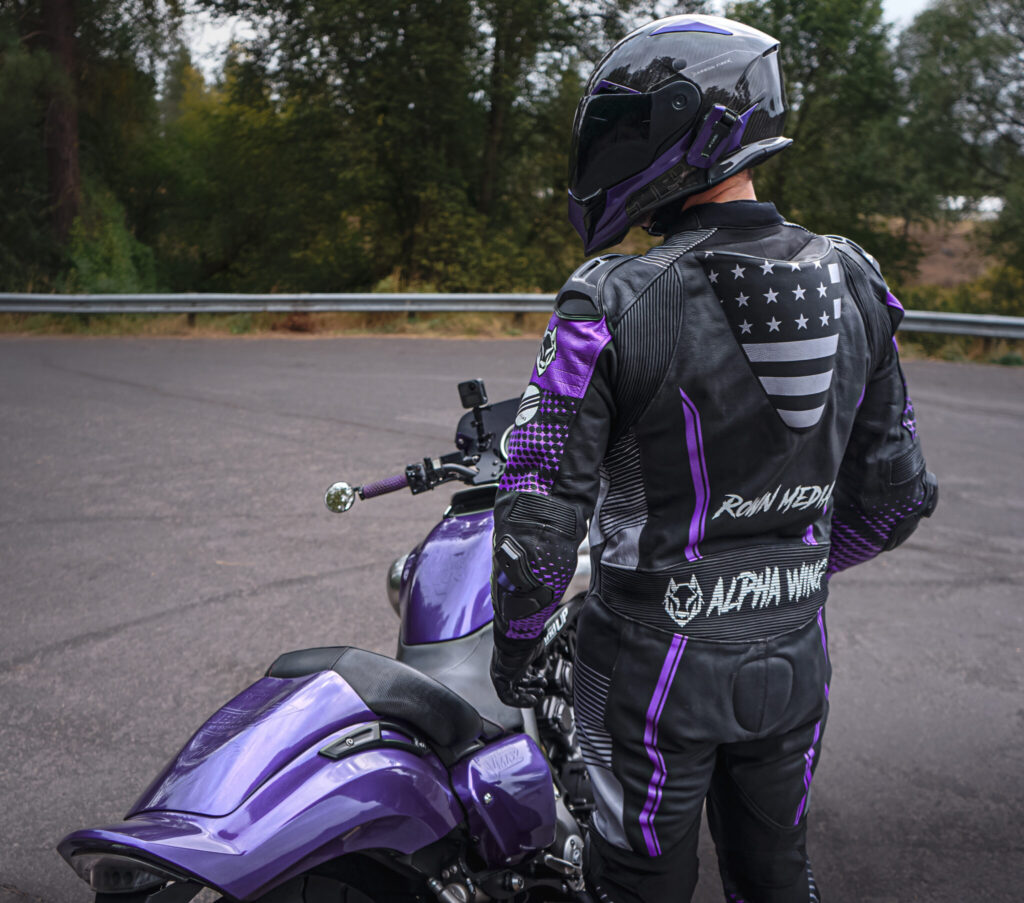Blog
Top 10 Features to Look in a Custom Racing Suit

Whether you’re racing on the track or enjoying high-speed weekend rides, a custom motorcycle racing suit is essential for both safety and performance. Unlike off-the-rack options, a custom suit is made specifically for your body and riding style. But what makes a great custom suit?
In this guide, we’ll explore the top 10 features to look in a custom racing suit, helping you make a smart investment in gear that delivers protection, comfort, and style.
10 Features to Look in a Custom Racing Suit
1. Tailored Fit for Precision and Comfort
The first and most important feature to consider is the tailored fit. Custom racing suits are built according to your exact measurements. This ensures:
- A snug fit that doesn’t flap in the wind
- Armor stays in the correct position
- Improved comfort and mobility on the bike
Off-the-rack suits can’t compete with this level of precision. A tailored fit enhances your aerodynamics and reduces rider fatigue, especially during long sessions on the track.
2. CE-Certified Armor for Maximum Protection
One of the critical features to look in a custom racing suit is CE-certified armor. This armor protects vital impact zones and is tested to meet strict European safety standards.
Look for CE Level 1 or CE Level 2 armor at:
- Shoulders
- Elbows
- Knees
- Back
- Optional chest protectors
Level 2 armor offers thicker, more advanced protection. While it may be slightly heavier, the peace of mind and added safety are well worth it—especially for competitive riders.
3. Premium Leather Material
The material of the suit determines its durability and safety. The best motorcycle racing suits use genuine cowhide or kangaroo leather, known for:
- Excellent abrasion resistance
- Flexibility and comfort
- Long-lasting wear
Kangaroo leather is lighter and offers better flexibility, though it’s typically more expensive. Cowhide is a more budget-friendly option that still delivers exceptional protection.
Avoid synthetic or textile materials for racing suits—they do not offer the same level of impact and abrasion resistance required at high speeds.
4. Ventilation and Perforation Zones
Motorcycle racing suits can get extremely hot, especially in summer. That’s why ventilation is a key feature. Look for:
- Perforated leather panels in the chest and thighs
- Mesh inner linings
- Breathable stretch zones
These features allow air to flow through the suit, reducing sweat and heat buildup. Staying cool is crucial for maintaining focus and avoiding fatigue during races.
5. Pre-Curved Sleeves and Legs for Ergonomic Fit
Motorcycle riding isn’t done standing up—it’s done in a crouched, leaned-forward position. That’s why your suit should come with pre-curved sleeves and legs.
This design mirrors your riding posture and offers:
- Better flexibility
- Less fabric bunching
- Reduced arm and leg fatigue
It might not sound like much, but this feature can drastically improve comfort during long or aggressive rides.

6. Reinforced Stitching for Extra Durability
Even the best leather won’t protect you if the stitching fails. Check for reinforced stitching on all high-stress areas.
Look for:
- Triple or double stitching
- Kevlar or bonded nylon threads
- Bar-tacking on stress points
Strong stitching ensures the suit stays intact during a slide or crash, holding armor in place and preventing seams from tearing apart.
7. Aerodynamic Race Hump
Modern racing suits often include a race hump located on the upper back. This hump serves multiple purposes:
- Improves aerodynamics at high speeds
- Helps reduce neck strain from wind pressure
- Adds a small level of impact absorption
Some suits also allow space inside the hump for a hydration system—a useful feature for endurance racing.
8. Accordion Stretch Panels for Movement
Freedom of movement is critical in racing, especially when shifting your weight in corners. That’s why high-quality suits include accordion-style stretch panels at:
- Shoulders
- Elbows
- Knees
- Lower back
These panels expand and contract with your body, giving you the flexibility to move freely without fighting your suit.
Elasticated fabric panels may also be used along the inner arms and thighs to enhance comfort and range of motion.
9. Removable Inner Liner and Moisture Wicking
A good suit is easy to wear—and easy to clean. That’s why you should look for one with a removable inner liner.
Benefits include:
- Easier to wash after races
- Keeps the suit smelling fresh
- Provides extra comfort and sweat management
Some suits also offer antimicrobial, moisture-wicking liners that help manage sweat and skin irritation during long rides.
10. Custom Style and Branding
Last but not least, your suit should represent you. Customization goes beyond fit and protection—it’s also about personal expression.
Most custom suit makers allow you to:
- Choose colors that match your bike or team
- Add your name or nickname
- Include sponsor logos or patches
Racing is not just about performance—it’s also about identity. Custom design options make your suit look as sharp as your skills on the track.
Conclusion
Investing in a custom motorcycle racing suit is a decision that blends safety, comfort, and personal style. Understanding the features to look in a custom racing suit helps you make informed choices that elevate your riding experience.
To recap, always prioritize:
- Tailored fit and proper armor
- High-quality leather and strong stitching
- Ergonomic design with ventilation
- Personal branding for a professional look
Whether you’re racing professionally or pushing limits at a track day, the right custom suit will protect your body—and your confidence.
Read More CE Armor Levels: A Beginner-Friendly Guide
FAQs
What is the most important feature in a custom motorcycle racing suit?
A tailored fit is most important, ensuring comfort, better mobility, and keeping protective armor in the correct position.
Is CE Level 1 or Level 2 armor better for motorcycle suits?
CE Level 2 armor offers higher impact protection and is preferred for serious racing and high-speed riding.
Do custom suits allow freedom of movement during riding?
Yes, they include stretch panels and pre-curved shapes to match riding posture, improving comfort and control.
Can I add my logo or name on a custom suit?
Absolutely! Custom suits allow full personalization with colors, logos, names, and sponsor branding for unique style.

